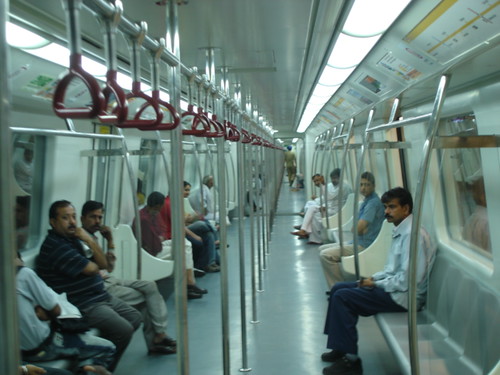

Each week we will be focusing on blogs from around the world dealing specifically with urban environments. We’ll be on the lookout for websites outside the country that approach themes related to urban experiences and issues.
– – – – – – – – – – – – – – – – – – – – – –
• Though still incomplete, New Delhi’s subway system is already being hailed as “a runaway success”. According to the The New York Times not only is the Delhi Metro “scrupulously clean, impeccably maintained and almost unfailingly punctual” it also boasts cheap fares, and, even more incredibly, manages to turn an operating profit.
• London’s Routemasters, the red doubledecker buses the city is famous for, are getting replaced. While still the iconic red, the new fleet, designed by Thomas Heatherwick and Wrightbus, will be significantly more sustainable and sleeker than the older models. The Architects Newspaper hosts a video on the design features of the new bus, scheduled to hit the road by 2012.
• Bangkok’s city street continue to be the site of escalating violence between the Thai military and Red Shirt political protesters. A series of poignant photographs on Boston.com shows an urban landscape transformed into a war zone.
• A New York advocacy group, The Right to the City Coalition, has come up with a bold plan for housing the city’s homeless: transforming New York’s 264 vacant luxury residential developments into temporary shelters.
photo of Delhi Metro by David Lisbona

5 comments
Any subway, metro, or transit facility is “scrupulously clean, impeccably maintained and almost unfailingly punctual” when new. Move into a new house and it will be scrupulously clean and impeccably maintained, but for how long? As for being “almost unfailingly punctual”, it usually means it was designed with enough room and space for more people.
The Globe had an interesting article a few weekends ago on Bombardier’s experience in India with regards to the New Delhi metro:
http://bit.ly/9uNCtw
The New Delhi Metro also runs 4 minute frequencies during peak periods. Pretty easy schedule to maintain.
Did anyone not notice that they build 118 miles (~189 km) of subway in new Delhi for 6.55 Billion (I’m assuming USD as it was a NY Times article = 6.7 CAD Billion). This works out to 35.4 M/km.
That is substantially cheaper then any estimates I’ve seen for building subways here at (~300M/km). Why the huge difference? We aren’t talking small amounts, but a factor of 8.
I’m assuming material costs/rolling stock are similar costs.
Are design/material costs/labour eight times more expensive here then in India?
The rolling stock would be cheaper as they were assembled in India – they paid $727m for 424 cars, $1.7m/car, whereas the recently approved follow-on order to Thunder Bay for Toronto subway cars was C$2.1m/car – and taking the entire $1.1bn order for 420 that works out to C$2.6m each.
Any land requirement for maintenance yards, station entrances etc. would be substantially cheaper too.
The most expensive pieces of subways tend to be stations as they are dug out not punched out of the bored tunnel. This would tend to be cheaper as more labour intensive.
Finally, since they were building a large subway all at once they could get economies of scale that Toronto didn’t get on the Spadina line which was an increment to the existing network. I don’t know whether their stations tended to the functional rather than the Sorbara Line’s architect designed stops.